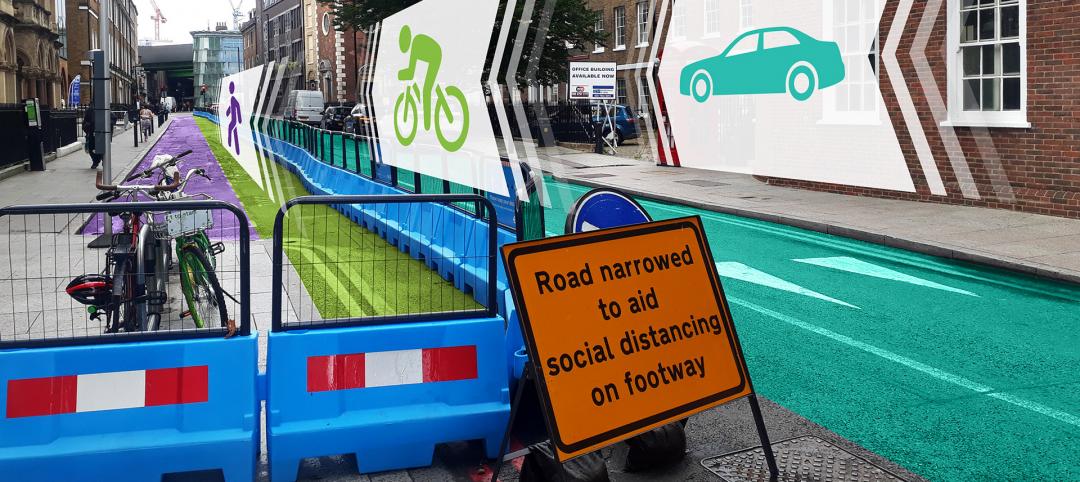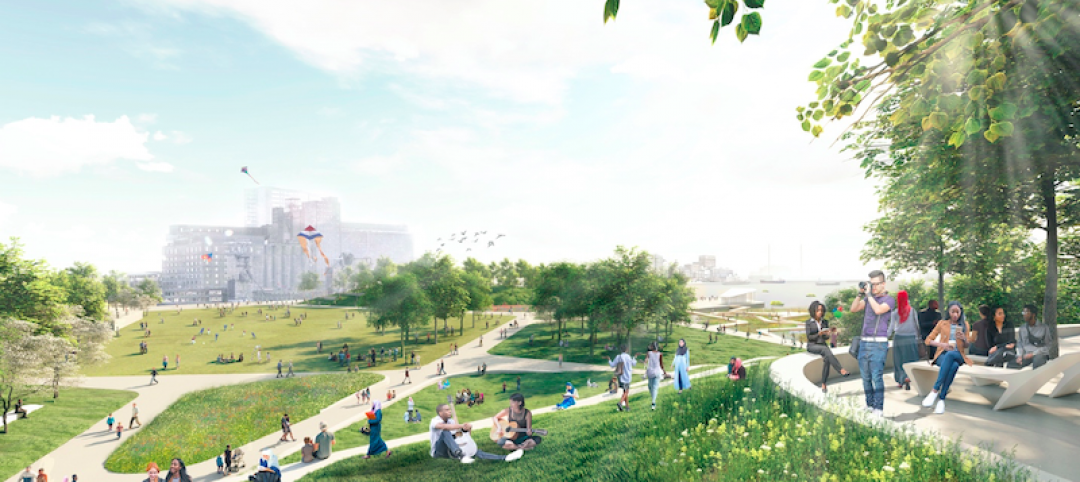New York City is installing its first large-scale porous pavement installation along seven miles of roadway in Brooklyn.
The project will keep 35 million gallons of stormwater out of the combined sewer system each year, according to a news release. Porous pavement will be installed along the curb line of streets, where stormwater typically drains towards a catch basin on the corner. The pavement can withstand the weight of motor vehicles, including trucks. New York has piloted the use of several different types of porous pavement for a few years in different boroughs, but this is the first large-scale implementation.
“Climate change is bringing with it rainstorms that can overwhelm our sewers and cause flooding across the five boroughs, which is why we are investing in tools that will divert rainwater away from the sewer system, such as porous pavement,” said New York City Department of Environmental Protection Commissioner Rohit T. Aggarwala. “Brooklyn got hit particularly hard by Tropical Storm Ophelia last September and this new porous pavement will help to ease pressure on the sewer system and protect residents during future storms.”
Over the last decade, the city has built the nation’s largest Green Infrastructure Program, the release says. Green Infrastructure intercepts stormwater before it can drain into sewers, thereby preserving some capacity in the system and helping to prevent, or reduce, flooding, backups, and overflows. Green infrastructure includes porous pavement, curbside rain gardens, permeable pavers, green or blue roofs, and underground storage. To date the city has built more than 13,000 green infrastructure installations, including more than 9,000 curbside rain gardens.
Related Stories
Urban Planning | Feb 11, 2022
6 ways to breathe life into mixed-use spaces
To activate mixed-use spaces and realize their fullest potential, project teams should aim to create a sense of community and pay homage to the local history.
Urban Planning | Jan 25, 2022
Retooling innovation districts for medium-sized cities
This type of development isn’t just about innovation or lab space; and it’s not just universities or research institutions that are driving this change.
Urban Planning | Dec 15, 2021
EV is the bridge to transit’s AV revolution—and now is the time to start building it
Thinking holistically about a technology-enabled customer experience will make transit a mode of choice for more people.
Designers / Specifiers / Landscape Architects | Nov 16, 2021
‘Desire paths’ and college campus design
If a campus is not as efficient as it could be, end users will use their feet to let designers know about it.
Urban Planning | Nov 11, 2021
Reimagining the concrete and steel jungle, SOM sees buildings that absorb more carbon than they emit
The firm presented its case for a cleaner built environment during the Climate Change conference in Scotland.
Urban Planning | Aug 16, 2021
Building with bikes in mind: How cities can capitalize on the pandemic’s ‘bike boom’ to make streets safer for everyone
Since early 2020, Americans have been forced to sequester themselves in their homes with outdoor activities, in most cases, being the sole respite for social distancing. And many of people are going back to the basics with a quintessential outdoor activity: biking. Bike sales absolutely skyrocketed during the pandemic, growing by 69% in 2020.
Resiliency | Jun 24, 2021
Oceanographer John Englander talks resiliency and buildings [new on HorizonTV]
New on HorizonTV, oceanographer John Englander discusses his latest book, which warns that, regardless of resilience efforts, sea levels will rise by meters in the coming decades. Adaptation, he says, is the key to future building design and construction.
Urban Planning | May 3, 2021
SWA/Balsley unveils Nelson Mandela Park Master Plan for Rotterdam
The conceptual plan provides much-needed central neighborhood and civic open space in the city’s South Maashaven district.
University Buildings | Apr 29, 2021
The Weekly Show, April 29, 2021: COVID-19's impact on campus planning, and bird management strategies
This week on The Weekly show, BD+C Senior Editor John Caulfield interviews a duo of industry experts on 1) how campus planning has changed during the pandemic and 2) managing bird infestations on construction sites and completed buildings.
Urban Planning | Dec 6, 2020
Ford lays out plans for mobility innovation district in Detroit
Its centerpiece is an abandoned train depot whose architecture and decay reflect two sides of this city’s past.









![Oceanographer John Englander talks resiliency and buildings [new on HorizonTV] Oceanographer John Englander talks resiliency and buildings [new on HorizonTV]](/sites/default/files/styles/list_big/public/Oceanographer%20John%20Englander%20Talks%20Resiliency%20and%20Buildings%20YT%20new_0.jpg?itok=enJ1TWJ8)







